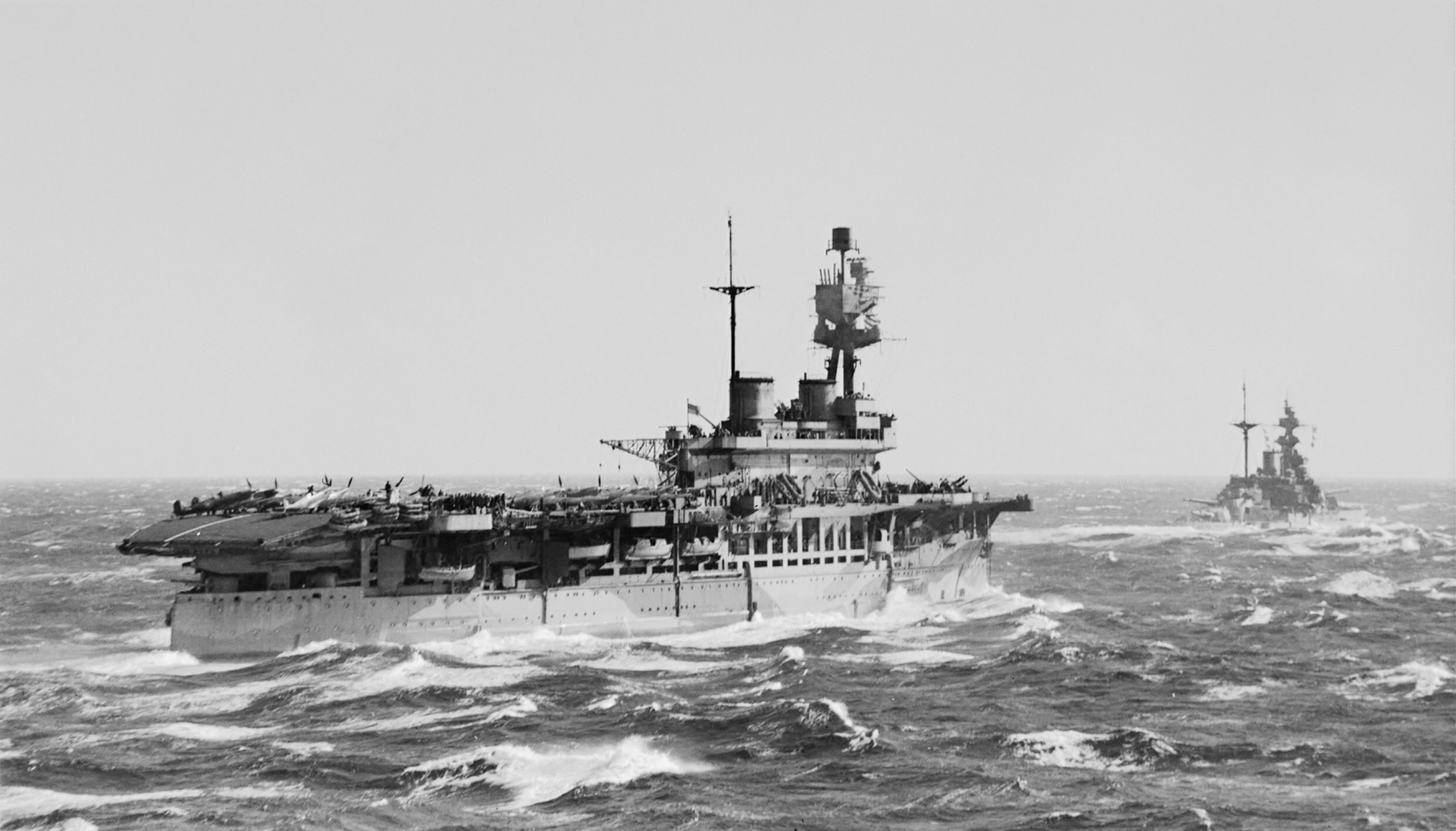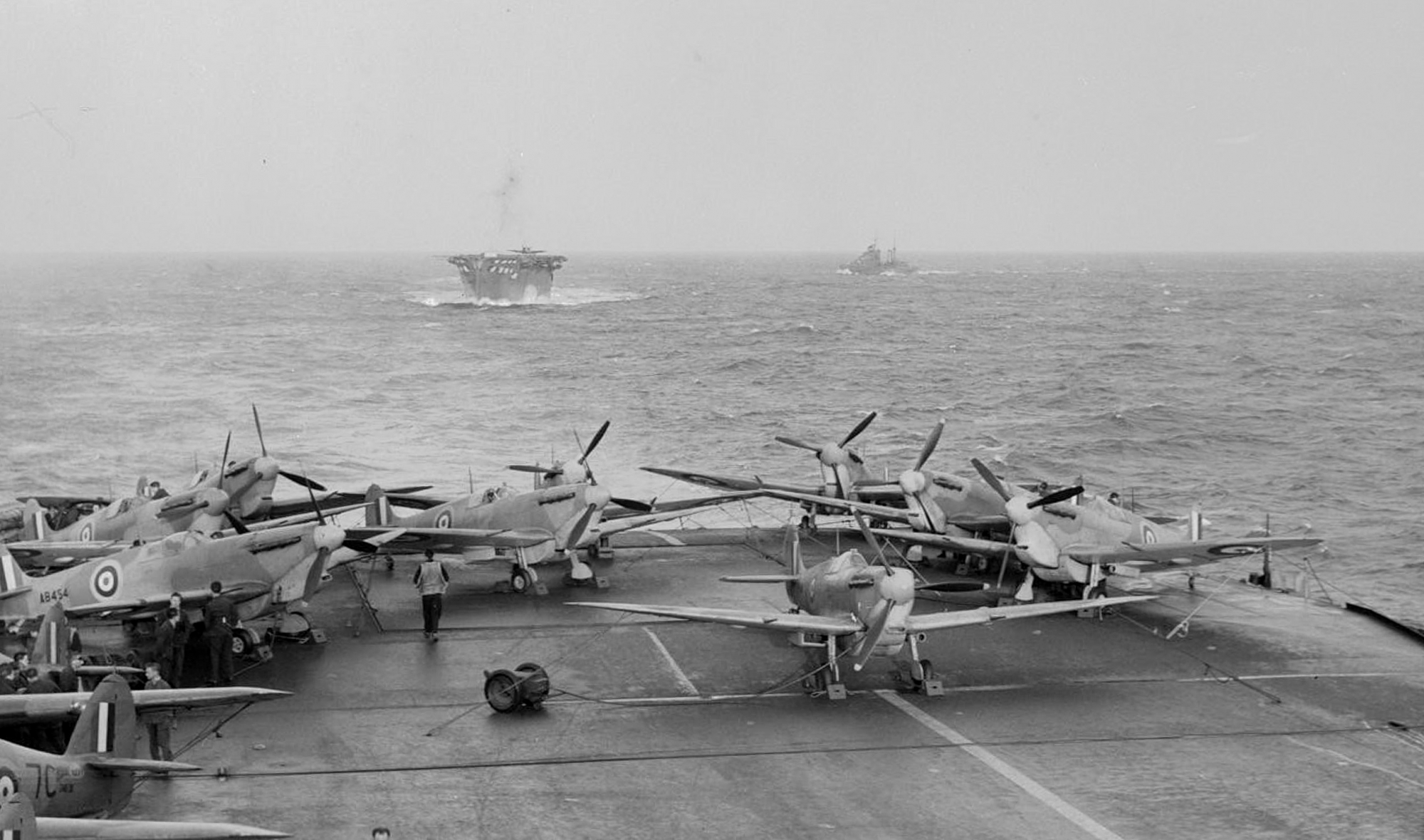First Spitfires to Malta, March 1942
Header image: Mk Vb Spitfires on the deck of the RN aircraft carrier HMS Eagle before flying off to Malta during Operation PICKET on 21st March 1942. The Spitfires have the large Vokes air filters under the nose to counter the dusty conditions on Malta, and are fitted with 90-gallon ‘slipper’ belly tanks.
80 years ago this month, in March 1942, the situation on the besieged Mediterranean island of Malta had become dire. The German and Italian Axis air forces were attacking the island several times every day and it was becoming the most bombed place on earth. The Malta inhabitants and defenders were facing acute shortages of everything, including pilots and aircraft. The Hawker Hurricanes defending the island were outclassed by the Luftwaffe Bf 109Fs; the incessant attacks on their airfields, and losses in combat, were diminishing their numbers to critical levels. Some sources suggest that the number of serviceable Hurricanes had fallen to as few as 12. In late February 1942, Squadron Leader Stan Turner DFC and Bar, a Canadian, a veteran of the Battle of Britain and now the C.O. of 249 Squadron on Malta, told the A.O.C., Air Vice Marshal Hugh Lloyd, “Either, Sir, we get Spitfires here within days, not weeks, or we’re done. That’s it.”

The first Spitfires to arrive on Malta, and the first to be deployed outside of Britain, were 15 Mk Vb Spitfires, which were flown off the RN aircraft carrier, HMS Eagle, on 7th March, on Operation SPOTTER. The Spitfires were fitted with 90-gallon ‘slipper’ belly tanks to give them the range for the 650-mile flight to Malta. To counter the prevalent dusty conditions that they would encounter on Malta, the Spitfires had the large Vokes filter under the nose, which created more drag and lowered the aircraft performance. In order to take-off from HMS Eagle’s short 660-feet long flight deck, the Spitfire needed take-off flaps. However, the Spitfire’s pneumatically-operated flaps have only one setting of 85 degrees (drag flap for landing). The solution was to wedge the flaps at a 25-degree setting with a wooden wedge. Once safely airborne, the flaps could be lowered to drop the wedges and then raised again. The 15 Spitfires all reached Malta safely and flew their first combat sorties against a raid by Junkers Ju-88s, escorted by Bf 109 fighters, three days later on 10th March. The 19-strong defensive force of Spitfires and Hurricanes scrambled from Ta Qali and Hal Far was the largest the island had been able to muster for some weeks. Flight Lieutenant Philip ‘Nip’ Heppell of 249 Squadron, claimed the Malta Spitfires’ first kill when he shot down a Bf 109, whilst other Spitfire pilots claimed a ‘probable’ and three enemy aircraft damaged during the day.

A further nine Spitfires flew off HMS Eagle on 21st March on Operation PICKET, all reaching Malta safely. The Spitfires arrived in the critical phase of the Axis bombing offensive against Malta, which reached its apex between 20th March and 28th April 1942. HMS Eagle launched nine more Spitfires on 29th March, after which damage to her steering gear meant she had to be put into dry dock. Subsequent Spitfire deliveries to Malta were made from the flight deck of the USN carrier USS Wasp. In the months that followed, some 275 Spitfires were delivered to the beleaguered island.

During the month of March 1942, the Luftwaffe flew a total of 4,927 sorties against Malta. The RAF lost 12 fighters in combat, with nine pilots killed, and a further 46 were destroyed on the ground. RAF causalities during the bombing raids were 28 killed and 34 wounded.
LEST WE FORGET







